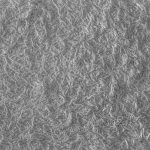Are you wondering what fabric to use when lining your satin dress? Look no further! In this article, we’ll explore the various options available to you.
From silk to polyester, rayon to cotton, and even blend linings, we’ll discuss the pros and cons of each choice. By the end, you’ll have a clear understanding of which fabric will best enhance the beauty and comfort of your satin dress.
Let’s dive in and find the perfect lining for your garment!
Table of Contents
Silk as a Lining Fabric for Satin Dresses
Silk is often used as a lining fabric for satin dresses because of its luxurious feel and smooth texture. When comparing silk and satin linings, there are several benefits to using silk.
Firstly, silk is a natural fabric made from the cocoons of silkworms, whereas satin is a weave that can be made from various materials, including silk. This means that silk linings offer a more authentic and high-quality option for satin dresses.
Additionally, silk is known for its breathability, which allows air to circulate and keeps the wearer cool and comfortable. Satin linings, on the other hand, may not provide the same level of breathability.
Moreover, silk is hypoallergenic and gentle on the skin, making it suitable for those with sensitive skin or allergies. Satin linings, although smooth, may not offer the same level of comfort and skin-friendliness.
In terms of appearance, silk linings have a subtle sheen that complements the shine of satin fabric, resulting in a more elegant and refined overall look.
Therefore, when choosing a lining fabric for a satin dress, silk is often the preferred choice due to its luxurious feel, breathability, hypoallergenic properties, and complementary aesthetic.
Polyester Lining for Satin Dresses
When making a satin dress, opt for polyester lining as it provides a smooth and comfortable fit. Polyester is a popular choice for lining satin dresses due to its numerous benefits. Here are some key advantages of using polyester lining in satin dresses:
-
Durability: Polyester is known for its strength and durability, making it a reliable choice for lining satin dresses. It can withstand the wear and tear of regular use and maintain its shape over time.
-
Wrinkle resistance: Polyester has natural wrinkle-resistant properties, which means your satin dress will stay looking pristine even after hours of wear. This is especially beneficial for special occasions or events where you want to look polished and put-together.
-
Moisture-wicking: Polyester lining helps to wick away moisture from the body, keeping you cool and comfortable throughout the day. This is particularly advantageous during hot weather or when the satin dress is close-fitting.
-
Easy care: Polyester lining is easy to care for and requires minimal maintenance. It can be machine-washed, dried quickly, and does not require ironing, saving you time and effort.
Overall, opting for polyester lining in your satin dress not only enhances its fit and comfort but also ensures its longevity and easy upkeep.
Rayon Lining Options for Satin Dresses
For a different lining option, consider rayon as it offers a soft and lightweight feel for your satin garment.
When it comes to satin dress lining materials, rayon is a popular choice due to its numerous benefits. Rayon is a synthetic fabric made from cellulose fibers, which gives it a natural feel and high breathability. This makes it ideal for lining satin dresses as it allows air to circulate, keeping you cool and comfortable.
Additionally, rayon is known for its smooth texture, which helps prevent any friction between the lining and the satin fabric, ensuring a flawless drape and fit. It also has excellent moisture absorption properties, wicking away perspiration and keeping you feeling fresh throughout the day.
Moreover, rayon is highly versatile, allowing it to be easily dyed in a wide range of colors to match your satin dress perfectly.
Overall, rayon lining in satin dresses not only enhances the overall aesthetic appeal but also provides comfort and durability. So, if you’re looking for a lining option that combines softness, breathability, and versatility, rayon is definitely worth considering.
Cotton Lining for Satin Dresses: Pros and Cons
Consider cotton as an alternative lining option for your satin dresses, as it offers both pros and cons. While silk is often seen as the go-to choice for lining satin dresses, cotton can provide some unique benefits. Let’s compare cotton and silk as lining fabrics for satin dresses:
| Cotton | Silk |
|---|---|
| Breathable | Luxurious |
| Absorbent | Smooth |
| Affordable | Expensive |
| Less slippery | More slippery |
One of the advantages of using cotton as a lining fabric is its breathability. Cotton allows air to circulate, keeping you cool and comfortable in warmer weather. It is also absorbent, which means it can wick away moisture and prevent sweat stains. Additionally, cotton is more affordable compared to silk, making it a budget-friendly option.
However, silk has its own set of advantages. It has a luxurious feel and a smooth texture that adds an elegant touch to any satin dress. Silk is also known for its breathability and ability to regulate body temperature. On the downside, silk can be more expensive and may be more slippery compared to cotton.
Ultimately, the choice between cotton and silk as a lining fabric for satin dresses comes down to personal preference and the specific requirements of the dress. Consider these pros and cons when making your decision.
Choosing a Blend Lining for Satin Dresses
To achieve the perfect blend of comfort and style, opt for a blend lining in your satin dresses. Here are four reasons why a blend lining is a great choice for your satin dress:
-
Advantages of using a stretch lining for satin dresses: A blend lining that includes a stretch fabric, such as spandex or elastane, provides added flexibility and comfort. It allows the dress to move with your body, giving you the freedom to dance and enjoy the occasion without feeling restricted.
-
Exploring alternative lining materials for satin dresses: While silk is a popular choice for lining satin dresses, a blend lining can offer similar benefits at a more affordable price. Blending silk with other fabrics like cotton or polyester can create a lining that is both luxurious and practical.
-
Enhanced breathability: Satin dresses can sometimes feel hot and stuffy, especially in warmer weather. A blend lining that includes breathable materials like cotton or bamboo can help regulate your body temperature and keep you cool throughout the day.
-
Improved fit and silhouette: A blend lining can provide additional structure and support to your satin dress, enhancing its overall fit and silhouette. By choosing a lining that complements the satin fabric, you can achieve a polished and flattering look.
Conclusion
In conclusion, when choosing a lining fabric for your satin dress, there are several options to consider.
Silk is a luxurious choice that offers a smooth and breathable feel.
Polyester lining is a more affordable option that provides durability and ease of care.
Rayon lining offers a soft and lightweight option.
Cotton lining has its pros and cons, including breathability but potential shrinkage.
Lastly, a blend lining can offer a combination of desirable qualities.
Ultimately, the best fabric for lining your satin dress will depend on your personal preferences and budget.
- Tetron Fabric for Marine Applications: Durability and Use Cases - June 18, 2025
- Tetron Fabric for Outdoor Furniture: Weather Resistance and Care - June 18, 2025
- Tetron Fabric for Wall Coverings: Style and Application Tips - June 18, 2025



